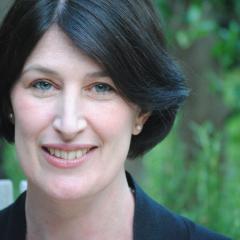
Irish and Jewish
When people hear that I wrote my master’s thesis on the Liturgical Music of Irish Jews, and that my ethnomusicologist husband, who is a Jew-by-choice, specializes in traditional Irish Music, they often assume that he’s the Irish one. He’s not. My great-grandfather, Peter Shapiro immigrated to the US from Minsk and married one Alice McGuirk. Peter, was Jewish. Alice was Irish Catholic. While intermarriage is such an everyday part of our current landscape, I can’t imagine the fuss this must caused at the time. My mom is Jewish and so I’m legitimately both Irish and Jewish. When I had the opportunity to tag along with my husband as he was doing his doctoral research in Ireland, I couldn’t resist the urge to do some serious research on the nexus of these two parts of my history. With Saint Patrick’s Day coming up, I thought I’d share some of that history with you.
(Click here for a link to hear "If it wasn't for the Irish and the Jews")
The connection between Jews and Ireland is a longstanding one, which even found its way into the myths of the Irish people. There is more than one Irish myth linking the Bible and Jews with Ireland. Perhaps the most interesting links the Irish people to Noah through the claim that the Irish themselves descended from a certain Banba, a relative of Noah’s who escaped the flood on the mountain peak of Tul Tuinde and who was older than Noah. Another myth relates that The ‘God Tribes’ or Tuath-de Danaan were turned into fairies or Shee residing in castles and caves. This group called the ‘God Tribes’ was thought to be members of the tribe of Dan.
In fact, Jews came to Ireland most probably for the first time in the year 1079, and were not welcomed. This is recorded in the Annals of Innisfallen, reporting that: “Five Jews came over sea with gifts to Tairdelbach and they were sent back again oversea.” The Annals do not specify where these Jews came from, or to where they were returning. During the medieval period, a few Jews made their way to Ireland and probably lived in Dublin. They shared the fate of fellow Jews in England, who were expelled from there in 1290. Between 1492 and the mid-1600s there were a few refugees from Spain and their descendants, but open profession of Judaism was not allowed in Ireland. Jews began to return to England in 1656, opening a line of travel to Ireland a few years later, which others followed. Until the mid-1700’s, the small community of Irish Jews consisted of Sephardim, mostly merchants who made their way to Dublin from Holland. They were most likely New Christians, originally from Portugal. This group was substantial enough to found Ireland’s first synagogue in 1660 or 1661. There is no documented notation of synagogal music from this period of Irish-Jewish History, but one could venture to guess that the music would be similar to what exists in the The Birnbaum Collection of manuscripts dated to the mid-1700s from Holland, housed at Hebrew Union College in Cincinnati.
The early to mid-1800’s witnessed a migration of German Jews to Ireland. Later, fueled by Russia’s passage of the May Laws in 1882, there was an influx of Eastern European Jews to Ireland, especially Dublin. From this time to the present, there has been a cross-migration to and from England. The Jewish population in Ireland peaked at 5,400 in 1946 and has been in sharp decline since then.
Jewish immigration to Ireland is no longer a great factor in shaping the Jewish community there. Currently, Jews tend to leave Ireland, rather than settle there. Many of the emigrants find homes in other English-speaking lands, such as England, South Africa and America. Others go to Israel. The main reason cited for leaving Ireland by younger Irish Jews is that of finding a Jewish spouse.
According to the Irish-Jewish community’s website, the community is still quite active despite the significant decline in population. The currently active congregations in Dublin are the Terenure Hebrew Congregation, founded in the mid 1900’s, which is an Orthodox Community based in southern suburbs of Dublin; Machzikei Hadass, which was founded in the late 1800’s and is an Orthodox Community, also in the southern suburbs of Dublin, lovingly called “The Maxi” to those in the know; and Congregation Orech Chayim – Dublin Jewish Progressive Congregation, which was founded in 1946 as a member of ULPS (The Union of Liberal and Progressive Synagogues), and is also located in the southern suburbs of Dublin.
Jewish music in Ireland generally took its cues from across the channel in England, gracing the Irish synagogues with a beautiful tradition of choral singing. Although formal choirs were no longer seen in synagogues during the time I spent in Dublin, the congregations often broke out into song in three or four part harmony on certain beloved pieces by composers like Hast and Mombach.
(Click here for a link to hear "Yula" from the album "Saints and Tzadiks")
In recent years, there have been many Irish-Jewish collaborations as well. A 2004 film entitled Shalom Ireland documents the history of Jewish Ireland with a soundtrack by Ceilizemer (a ceili, pronounced KAY-lee, is a traditionalal Irish music & dance party). Irish singer Susan McKeown and Klezmatics lead singer and accordionist, Lorin Sklamberg recently put out a CD entitled Saints and Tzadiks, drawing on Yiddish and Celtic traditions. Traditional Irish musician and folklorist, Mick Moloney produced a concert and a CD at Symphony Space, both entitled If It Wasn't for the Irish and the Jews (http://www.amazon.com/Wasnt-Irish-Jews-Mick-Moloney/dp/B002HQWQFC) , noting the unique collaborations and cross-pollinations between Irish and Jewish songwriters in Tin Pan Alley.
So, this Saint Patrick’s Day, I hope you’ll join me in saying Erin Go Bragh (Ireland forever) and Am Yisrael Chai!

